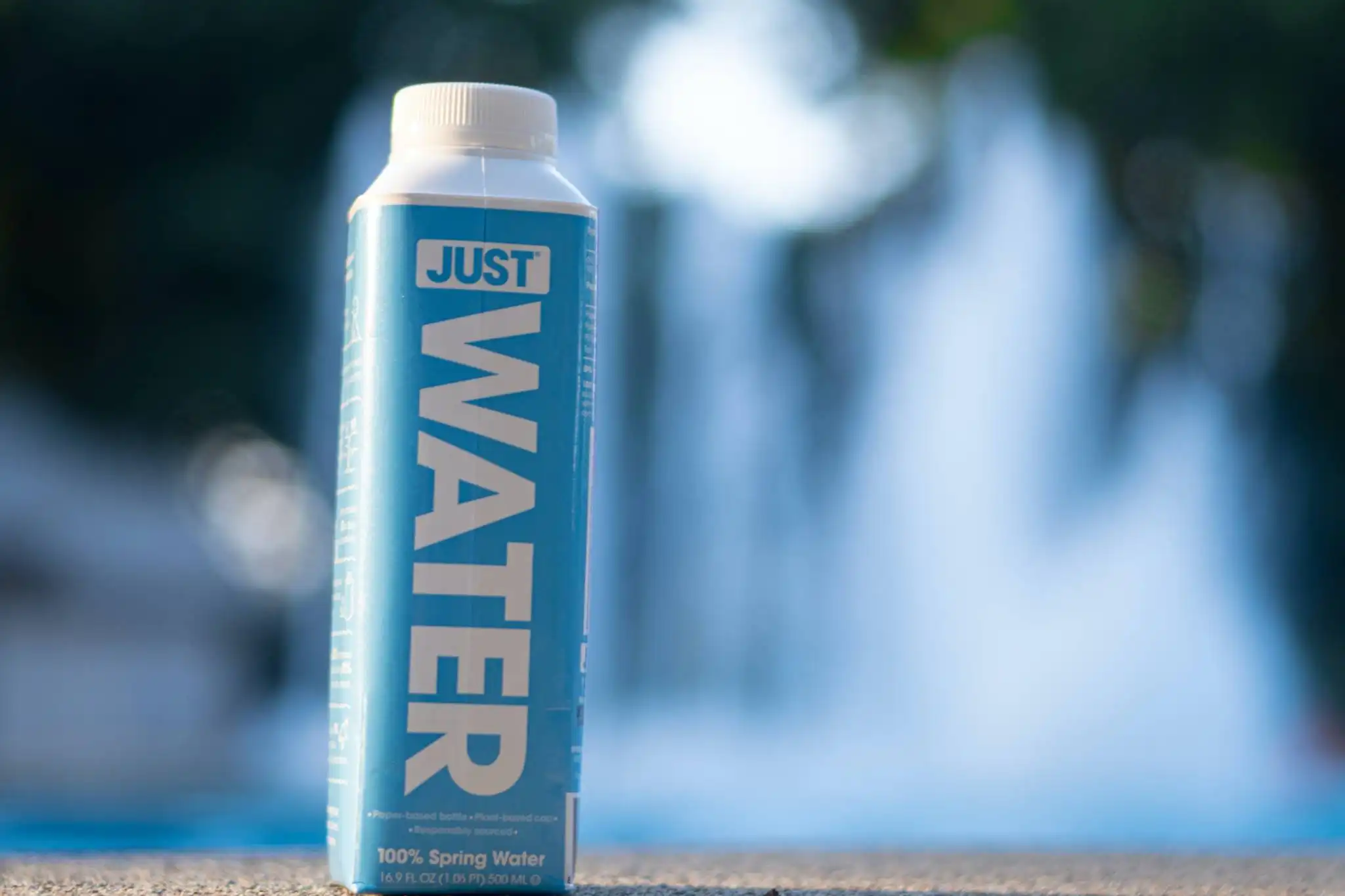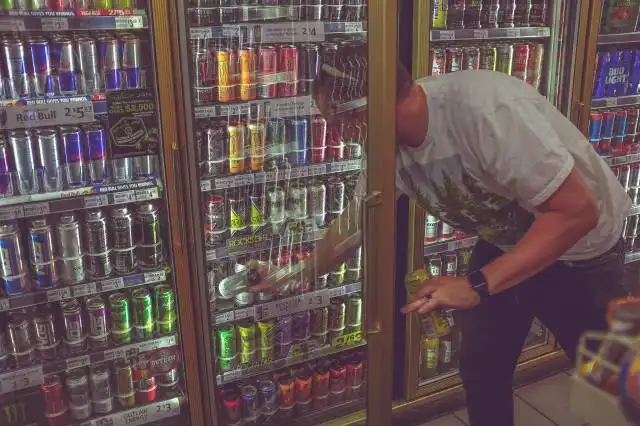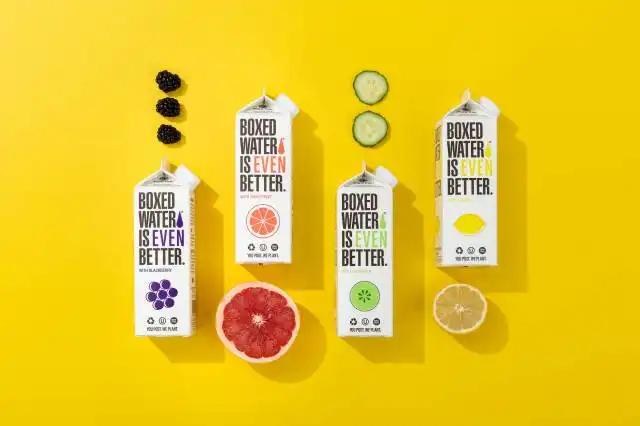Start a Bottled Water Business
Turning the Tides of Entrepreneurship with a Bottled Water Business
| Updated


BOTTLED WATER BUSINESS
Are you thirsty for a new business venture? Wrap your entrepreneurial arms around a bottled water business! In a world that's increasingly conscious about hydration, running a bottled water company could be your spring of success. This business type is all about purifying, packaging, and distributing water in bottles, meeting a fundamental need while you quench your entrepreneurial thirst!
Jump to Business Plan
RELATED BUSINESS IDEAS
Browse ALL Food & Beverage Entrepreneurship Business Ideas
Discover Your Perfect Domain
Unlock the door to your online success with our hand-picked selection of premium domain names. Whether you're starting a new venture or rebranding an existing one, the right domain can set the tone for your digital presence. Browse through our curated list, each with its unique potential to enhance your brand's visibility and credibility.
BOTTLED WATER MINI BUSINESS PLAN
This a quick reality check to help you identify the strengths and weaknesses of your business concept before you dive in.
Expected Percent Margin:
- Gross Margin: 35-50%
- Net Profit Margin: 10-15%
Earnings Expectations:
- Daily Earnings: $500 - $1000
- Weekly Earnings: $3,500 - $7,000
- Monthly Earnings: $14,000 - $30,000
- Annual Earnings: $168,000 - $360,000
Actions to Hit Those Numbers:
Inventory Management:
- Initial Investment: At least $30,000 - $50,000 for equipment, bottles, and raw materials.
- Supplier Network: Develop relationships with at least 2-3 reliable suppliers for bottle and label production.
Marketing and Customer Acquisition:
- Social Media: Post 3-4 times a week on platforms popular with your target demographic.
- Local Advertising: Budget at least $1,000 a month for local advertising and community sponsorships.
Sales and Customer Experience:
- Sales Channels: Establish sales through retail outlets, online stores, and direct deliveries.
- Customer Service: Provide top-notch customer service responding promptly to customer inquiries and feedback.
Cost Control:
- Production Cost: Streamline production process to reduce water, energy, and labor cost.
- Distribution Cost: Establish efficient distribution strategy to minimize transportation and storage costs.
Business Operations:
- Production Volume: Aim for daily production of 1,000-2,000 bottles.
- Quality Control: Implement rigorous quality control to ensure the highest quality and safety of water.
These are generalized estimations and can vary depending on location, production capacity, distribution network, and individual business strategies. Always consult with a financial advisor for personalized advice.
NOT WHAT YOU HAD IN MIND? Here are more ideas



Browse ALL Food & Beverage Entrepreneurship Business Ideas
Grab Your Business Website Name
Before you get caught up in the whirlwind of setting up your business, invest in a domain name. It's a small but significant step that lays the foundation for your brand and makes it easier for customers to find and trust you. Just like you wouldn't build a house without securing the land first, don't build a business without securing your domain name.
"Why? Can't that wait?" Here's why it shouldn't
Step 1: Determine if the Business is Right for You
Breakdown of Startup Expenses
Before starting a bottled water business, it is important to determine the startup expenses. This includes the cost of the bottles, caps, labels, and other packaging materials. Additionally, the cost of the water itself, as well as the cost of the equipment needed to fill the bottles, must be taken into consideration. Furthermore, the cost of any necessary permits or licenses should be factored in. Finally, the cost of any marketing materials or advertising should also be taken into account.
Breakdown of Ongoing Expenses
In addition to the startup expenses, it is also important to consider the ongoing expenses of a bottled water business. This includes the cost of the water itself, as well as the cost of the packaging materials. Additionally, the cost of any necessary permits or licenses must be taken into consideration. Furthermore, the cost of any marketing materials or advertising should also be taken into account. Finally, the cost of any employee wages or other labor costs should be factored in.
Examples of Ways to Make Money
There are several ways to make money in a bottled water business. The most obvious way is to simply sell the bottled water itself. Additionally, the business can also sell other products such as cups, coolers, and other accessories. Furthermore, the business can also offer services such as delivery or installation of water coolers. Finally, the business can also offer promotional services such as custom labeling or branding of the bottled water.
Step 2: Name the Business
When naming your bottled water business, it is important to keep in mind that the name should be memorable, unique, and easy to pronounce. Additionally, it should be able to capture the essence of the business and what it stands for. It is also important to make sure the name is not already taken by another business. To ensure that the name is not already taken, it is important to conduct a thorough search of the U.S. Patent and Trademark Office database. Additionally, you should also search the internet to make sure the name is not already taken by another business.
When coming up with a name for your business, it is important to brainstorm as many ideas as possible. You can do this by writing down words that are related to your business, such as “water”, “bottled”, “refreshing”, and “hydration”. You can also use a thesaurus to come up with more words related to your business. Once you have a list of words, you can start to combine them to create potential names for your business.
Once you have a list of potential names for your business, it is important to test them out. You can do this by asking friends and family for their opinion on the names. Additionally, you can also conduct a survey to get feedback from potential customers. This will help you to determine which name is the most memorable and will be the most successful.
Finally, once you have chosen a name for your business, it is important to register it with the U.S. Patent and Trademark Office. This will ensure that no one else can use the name and that your business is legally protected. Additionally, it will also help to ensure that your business is easily recognizable and will help to build brand recognition.
Step 3: Obtain Licenses and Permits
Before you can start your bottled water business, you must obtain the necessary licenses and permits. Depending on the state you are operating in, you may need to obtain a business license, a food service license, a food safety permit, and a water bottling permit. It is important to research the specific licenses and permits required in your area and to make sure you have all the necessary paperwork in order. Additionally, you may need to obtain a permit to use a specific water source for your bottled water.
Local Regulations
In addition to the licenses and permits required, you must also be aware of any local regulations that may apply to your business. Depending on the location of your business, you may need to comply with certain zoning laws or other regulations. It is important to research the local regulations and make sure your business is in compliance. Additionally, you may need to obtain a permit to use a specific water source for your bottled water.
Insurance
It is also important to obtain the necessary insurance for your business. You should consider obtaining general liability insurance, product liability insurance, and property insurance. This will help protect your business in the event of any accidents or damage to your property. Additionally, you should consider obtaining workers' compensation insurance if you plan on hiring employees.
Financing
Finally, you may need to obtain financing to cover the cost of the necessary licenses and permits. You may need to apply for a loan or seek out investors to help cover the cost. It is important to research the financing options available and make sure you have the necessary funds to cover the cost of the licenses and permits.
Step 4: Find a Supplier
Finding a supplier for your bottled water business is essential. You will need to source water that is safe to drink and that meets all local and federal regulations. You can source your water from a variety of places, including a municipal water source, a private well, or a spring. Depending on the source, you may need to have the water tested for safety and purity. You may also need to purchase additional equipment, such as a filtration system, to ensure the water meets all safety standards.
Packaging Supplies
In addition to sourcing the water, you will need to find a supplier for the bottles and packaging materials. You can purchase bottles in bulk from a variety of suppliers, and you will need to find a supplier for the caps, labels, and other packaging materials. You may also need to purchase other supplies, such as shrink wrap and pallets, to store and ship your bottled water.
Shipping Supplies
Finally, you will need to find a supplier for the shipping materials. You will need to find a supplier for boxes, tape, and other materials that you will need to ship your bottled water. You may also need to find a supplier for a shipping service, such as UPS or FedEx, to ensure that your bottled water is delivered safely and on time.
Step 5: Design and Print Labels
When designing labels for your bottled water business, it is important to keep in mind the overall aesthetic of the product. The label should be eye-catching and attractive, while also conveying the message of your brand. Additionally, it should include all the necessary information such as the name of the product, ingredients, and any other relevant information. It is also important to consider the type of material you will be using for the label, as this will affect the overall look and feel of the product.
Printing Labels
Once you have designed the labels, you will need to find a printer to print them. There are a variety of options available, including online printing services and local printing companies. It is important to compare prices and quality to ensure you are getting the best deal. Additionally, you should consider the turnaround time of the printer, as this will affect the timeline of your business. Once you have chosen a printer, you can place your order and have the labels printed.
Step 6: Find a Distributor
Finding a distributor for your bottled water business is an important step in the process. It is important to find a distributor that is reliable and has a good reputation. Start by researching potential distributors in your area. Ask other businesses in the industry for recommendations. Contact the distributors and ask questions about their services, delivery times, and pricing. Make sure to read the contract carefully and understand all the terms and conditions before signing.
Negotiate a Contract
Once you have identified a distributor that meets your needs, it is time to negotiate a contract. Make sure to discuss the terms of the contract in detail. This includes the length of the contract, the payment terms, the delivery schedule, and any other important details. Be sure to negotiate a fair price for your product. It is also important to make sure that the contract is legally binding and that both parties understand the terms.
Establish a Relationship
Once the contract is signed, it is important to establish a good relationship with the distributor. Make sure to communicate regularly and keep them informed of any changes or updates to your business. This will help ensure that the distributor is providing the best service possible. It is also important to be flexible and accommodating to the distributor’s needs. This will help ensure a successful partnership.
Step 7: Market the Business
When it comes to marketing a bottled water business, there are a few key strategies to consider. First, consider using traditional marketing methods such as print ads, radio ads, and television ads. These methods can be expensive, but they can also be very effective. Additionally, consider using digital marketing methods such as email campaigns, social media campaigns, and search engine optimization. These methods are often more cost-effective and can reach a larger audience.
Develop a Brand
Creating a strong brand is essential for any business, and it is especially important for a bottled water business. Developing a brand will help customers recognize your business and will help you stand out from the competition. Consider creating a logo, slogan, and color scheme that will help customers recognize your business. Additionally, consider creating a website and social media accounts to help promote your business.
Networking
Networking is a great way to get the word out about your business. Consider attending local events and conferences related to the bottled water industry. Additionally, consider joining local business groups and chambers of commerce. This will help you connect with other business owners and potential customers.
Promotional Items
Promotional items are a great way to get your business noticed. Consider giving away promotional items such as water bottles, t-shirts, and hats with your business logo. Additionally, consider offering discounts and promotions to help draw in customers.
Step 8: Set Up an Online Presence
Setting up an online presence is essential for any business. It allows customers to find out more information about the business, contact the business, and even purchase products or services. To set up an online presence, start by creating a website. This website should include information about the business, such as the mission statement, contact information, and product or service offerings. Additionally, it should include a blog or other content that can be used to engage customers and draw them to the website. Additionally, it is important to create social media accounts for the business. This will allow customers to interact with the business and get updates on new products or services. Finally, it is important to create an email list so that customers can be notified of any new products or services.
Step 9: Develop a Marketing Plan
Tips on Developing a Marketing Plan
Developing a marketing plan is essential for any business. It allows the business to reach its target audience and increase sales. To develop a marketing plan, start by researching the target audience. This will help to determine the best methods to reach them. Additionally, it is important to create a budget for marketing. This will help to ensure that the business is not overspending on marketing efforts. Additionally, it is important to create a timeline for the marketing plan. This will help to ensure that the business is staying on track and meeting its goals. Finally, it is important to track the results of the marketing plan. This will help to determine what is working and what needs to be changed.
Step 9: Monitor and Adjust
The ninth and final step to starting a bottled water business is to monitor and adjust the business as needed. It is important to stay on top of trends in the industry, customer feedback, and changes in the market. It is also important to be aware of any new regulations that may affect the business.
To monitor and adjust the business, it is important to keep track of sales, customer feedback, and any changes in the market. It is also important to stay up to date with industry trends and regulations. Additionally, it is important to stay in contact with suppliers and distributors to ensure that the business is getting the best deals and services.
Another way to monitor and adjust the business is to conduct regular customer surveys. This will help to identify any areas of improvement and customer satisfaction. Additionally, it is important to review the business’s pricing structure and marketing strategies on a regular basis to ensure that they are still effective.
Finally, it is important to stay in contact with other businesses in the industry. This will help to identify any new trends or changes in the market. Additionally, it is important to stay up to date with any new regulations that may affect the business. By staying informed and monitoring the business, it is possible to make the necessary adjustments to ensure the success of the business.
EXPLORE MORE CATEGORIES
Browse ALL Business Idea Categories
TAKE THE NEXT STEPS










